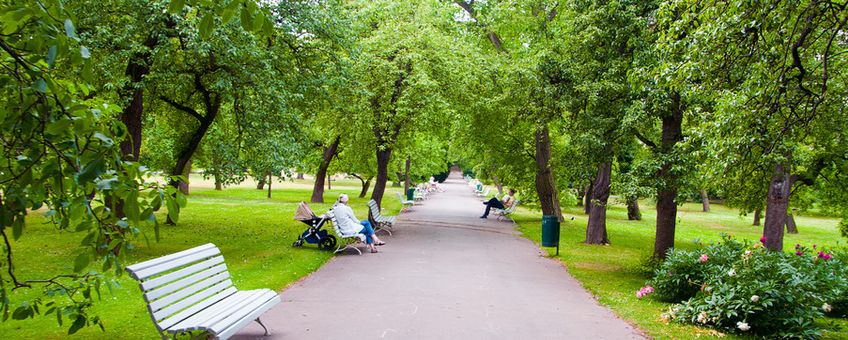
WHO stresses the importance of green spaces for mental health
Wageningen Environmental Research, Wageningen UniversitySjerp de Vries, researcher at Wageningen Environmental Research, is head of the EKLIPSE working group that investigated the link between greenery and mental health. The study resulted in a publication by the World Health Organization (WHO).
De Vries finds it an important step that the WHO has officially acknowledged the link between access to green spaces and mental health. “Previously, the emphasis was on green spaces and physical health, such as filtering particulate matter and encouraging physical activity. A stronger focus on mental health means there's more attention to everyday interaction with greenery such as trees and flower beds, in addition to deliberately visiting green areas such as forests and nature reserves. For example, a link has been found between street tree density and the use of antidepressants, whereby more trees equal fewer drugs.”
Lockdown
The coronavirus pandemic forced many people to work from home and limited their social interaction. It also sparked new research on the relationship between green spaces and mental health “We know that people under stress can benefit from being in nature,” says De Vries. “Studies during the pandemic showed that people with more access to greenery reported better mental health.” The strictness of the lockdown also determined the importance of access to nearby greenery. “One study compared the situations in Spain and Portugal,” continues De Vries. “Spain had a stricter lockdown. There, a green garden or a view of greenery from the home was more strongly related to well-being than in Portugal, where people were allowed to leave the house.”
New policy
The WHO publication also offered guidelines for policymakers. “Those tools now focus on the effect of greenery on air quality, which is easily measurable and can be translated into guidelines and actions,” explains De Vries. “What makes mental health so challenging is that it's hard to measure. The assumption is that you can reach more people with a greater diversity of greenery.”
Blue spaces
De Vries’ working group also examined the relationship between blue spaces and mental health, an issue that has previously been insufficiently researched. “We focused on the link between proximity to sea and views of the sea on mental health. This was harder to research than green spaces, as the sea is either there or it’s not. Very little research has been done on small blue elements such as rivers, ponds and canals. The University of Exeter is heading up a new European project called Blue Health to study this.”
WHO publication and EKLIPSE project
This summer, the WHO published its first report on the importance of green and blue spaces on the mental health of urban residents. The publication was based on two systematic reviews by the Biodiversity and Mental Health Expert Working Group of the EKLIPSE project. EKLIPSE is funded by the European Union and aims to answer questions from policymakers and other social stakeholders on issues such as biodiversity and ecosystem services.
More information
- WHO publication Green and blue spaces and mental health: new evidence and perspectives for action (2021)
- EKLIPSE reports
Text: Sjerp de Vries, Wageningen Environmental Research
Photo: Shutterstock
